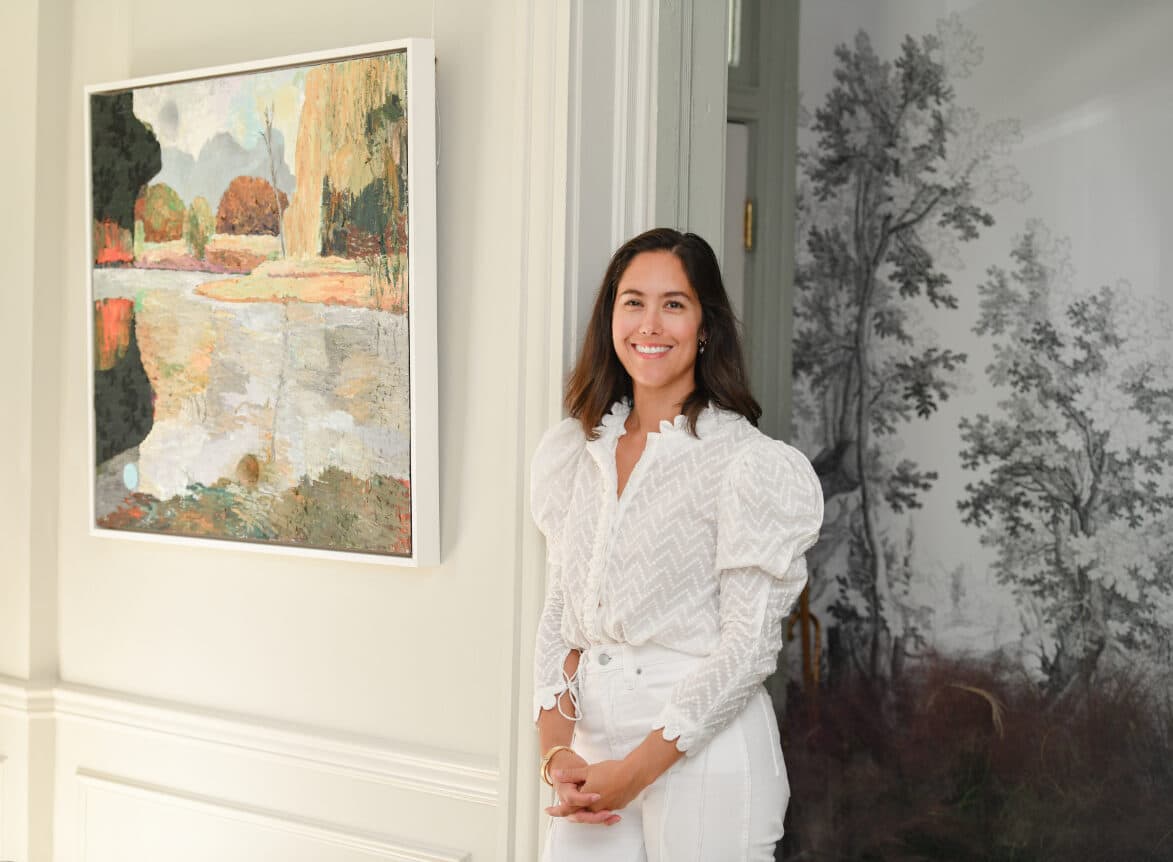Alexander Calder’s last and largest sculpture is called White Cascade (1976). Composed of fourteen flat circular disks and 14 connective metal rods, it dangles from a central point in the atrium of the Federal Reserve Building in Philadelphia and drops 100 feet, turning slowly through the air with the help of a motor. Standing under it, you might observe that it both looks and behaves like a megalithic earring.
It might come as a surprise to some that Calder would have had an intimate knowledge of how earrings behaved in space, but by then he had made over 80 pairs of actual earrings with his hands, for real ears and real bodies, in brass and silver, often given as gifts of love to his family and friends. And he made other jewelry and personal adornments: belt buckles, necklaces, rings, diadems, collars, scarf rings, brooches, buttons, bracelets and combs, all numbering somewhere around 1,800 small pieces.
-
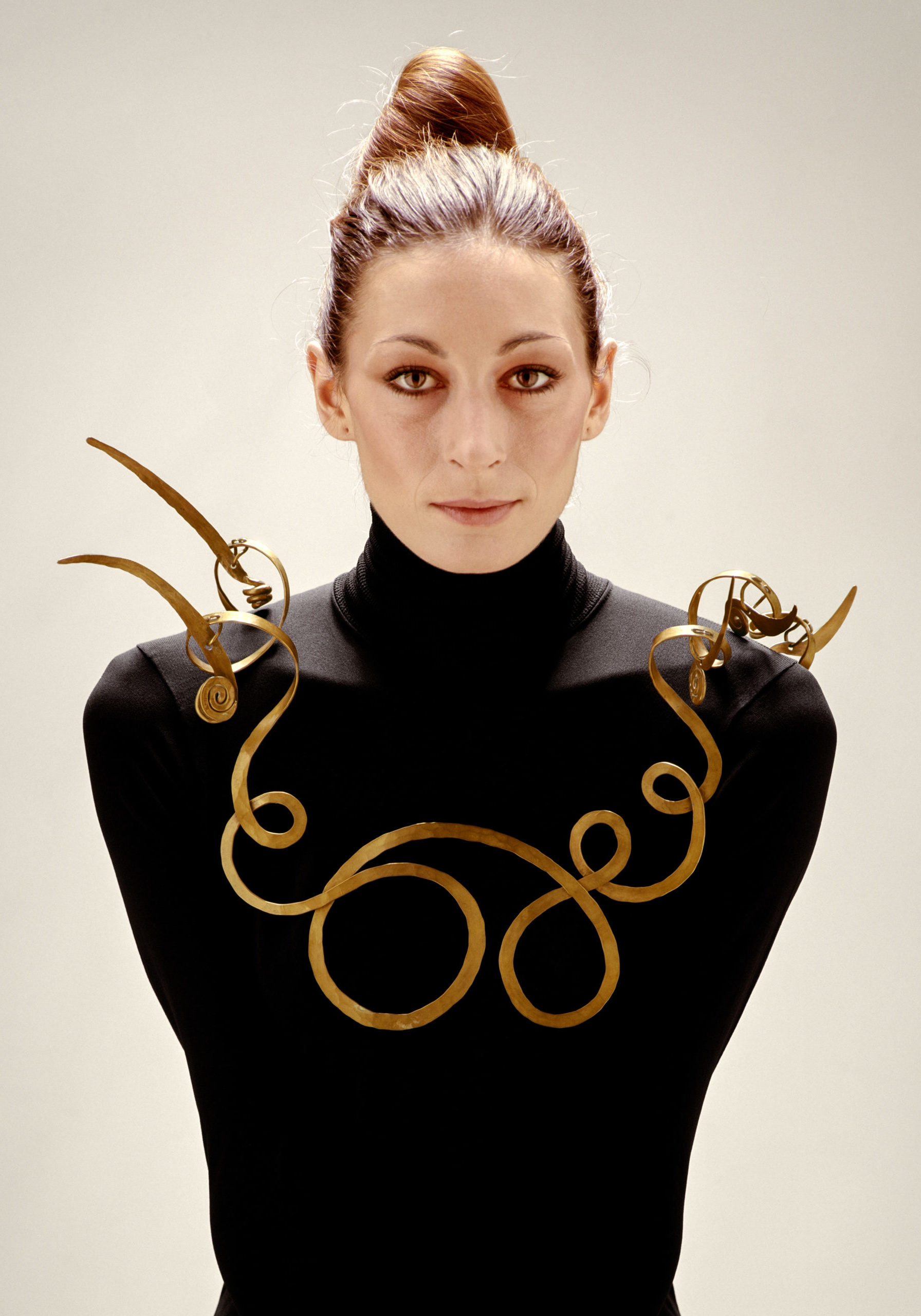
Anjelica Huston models a Calder necklace, 1976.
Estate Of Evelyn Hofer / Contributor -
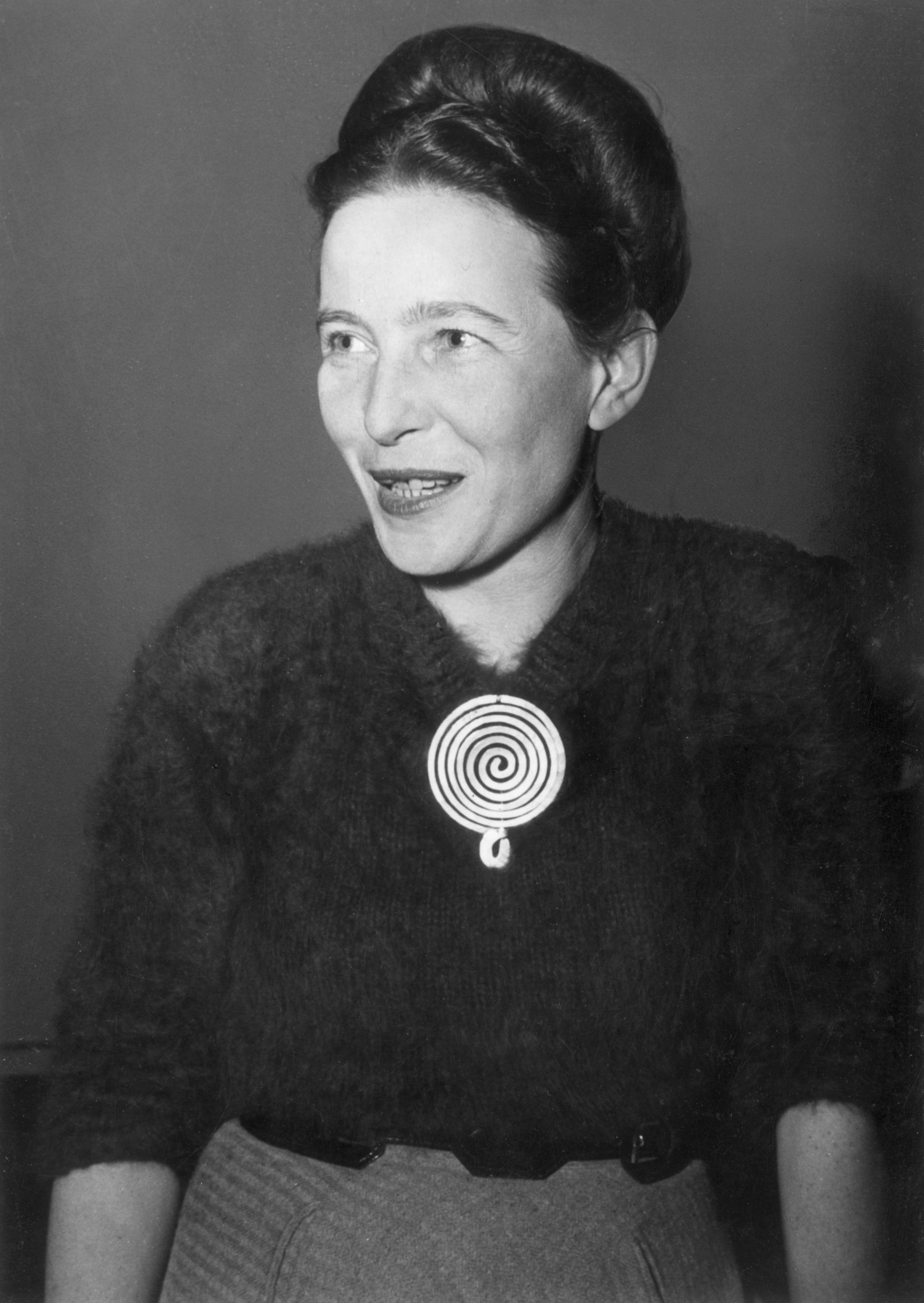
Simone de Beauvoir wears a brooch of the artist’s creation, c. 1955.
Hulton Archive / Stringer
“I meant to write you in a birthday letter two days ago but I made a necklace instead,” he jotted to his mother around her 64th birthday, explaining that making jewelry was a means of affection and communication. And while Calder is most associated with his large public works, or his medium-sized mobiles, it is the jewelry that shimmers with radiant intimacy, revealing the mark of Calder’s hammer, anvil and hand.
Calder traveled with his pliers in his pocket, and perhaps, like Sheila Hicks and her portable loom, hammering and shaping jewelry was a way of thinking for the artist, as he experimented on the smallest scale. He made jewelry throughout the course of his life; even the baubles he made for his sister’s doll in 1907 are extant in a photograph (Perl, 240). He worked cold, which is to say he did not heat the metal in order to solder or fuse it, and he had no training in smithing. The body of jewelry work is rustic, unpretentious, and sculptural, often interested in activation or amusement—sometimes the parts move when worn on the body, and on others the pin clasp or closing mechanism enhances and integrates into the form. Neither fixed placement nor permanence is of interest here, but passive collaboration and sentience most certainly are.
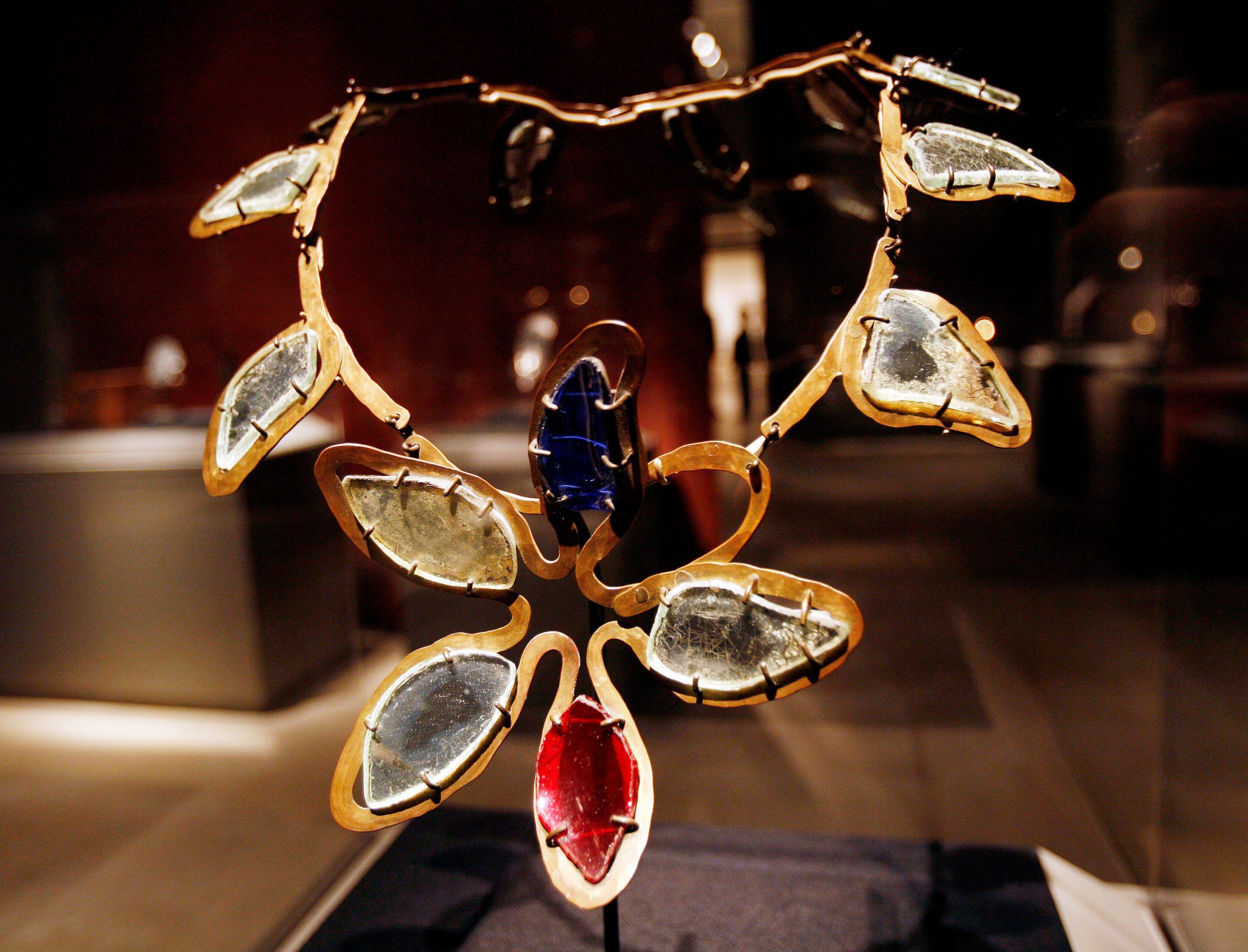
Calder’s Flower Necklace on display at the Metropolitan Museum of Art in New York.
REUTERS/Shannon StapletonSome of the jewelry shows Calder writing in wire, literally bending and hammering metal into words. One of the earliest and most elaborate examples of this is a cuff bracelet which spells MEDUSA in cursive lettering. It was Calder’s first love token to the woman who would become his wife of 46 years, Louisa James, whom he met aboard the De Grasse ocean liner while crossing from Paris to New York in 1929. Medusa was a reference to her hair, which she found difficult to tame while cruising aboard the liner. Calder would make more than 100 pieces of jewelry for Louisa, and their grandson Alexander Rower remembers his grandmother’s dressing table adorned and displayed as a magical place.
Other pieces are a play on words for their intended recipients. He made a hawk for Frances Hawkins, and a fish for Cornelia Pond. Some pieces reveal Calder’s deftness with his material and his fundamental interest in the coil, the spiral, the lozenge or the curl. Others, especially his earrings and necklaces, answer questions about the suspension and interdependency of parts that he would elaborate and scale with his work in mobiles. While not direct maquettes, some of the earrings could be classified as micro-mobiles.
-
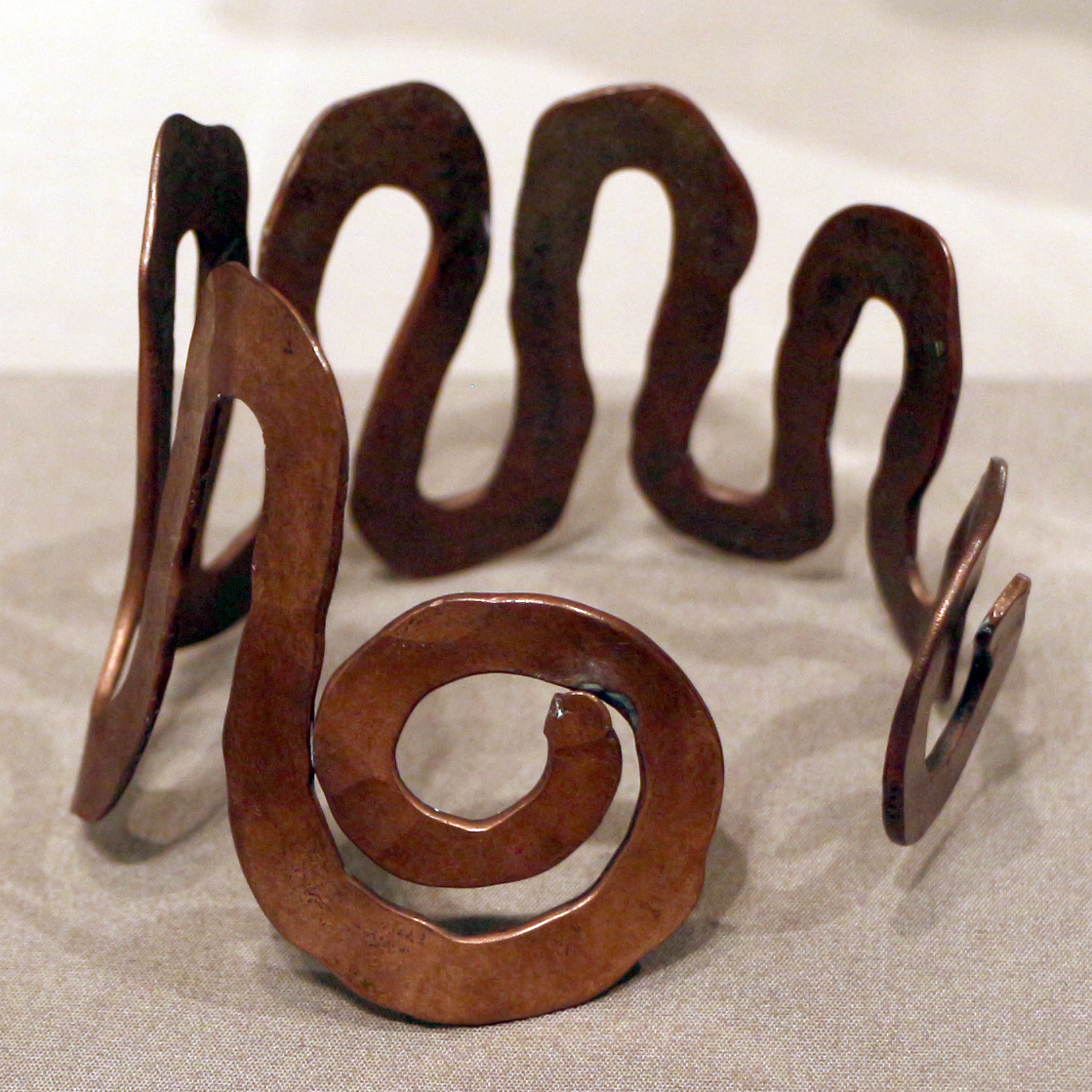
A bracelet designed in 1940.
Wikimedia / Sailko -

A later piece from 1966.
Wikimedia / Manuelarosi
Among the most uniquely articulated pieces are the entomological or animalistic ones, creatures like a phoenix, an owl, a thunderbird, a fish, a fish with legs, a fly, and a dragonfly. This zoo of work shares much in common with Calder’s wire work in the 1920s, where with lines of wire he drew hundreds of animals weightless in space, some of which formed a circus that he kept in suitcases and performed around Paris, and eventually the world. In ‘20s Paris, Calder participated in a movement that lauded a sophisticated kind of wit, as well as a free movement between so-called fine and applied or decorative art, both leitmotifs that he carried as he went along.
At the Winter Antiques show in New York this past April, in the booth of the shop Didier, which specializes in jewelry made by artists and designers, there were a handful of Calders for sale. The most extraordinary was an entomological pin which resembles an oversize fly with a gold belly, silver wings, and small wire coils for eyes. Right at the point where form meets function, the two pins on the back of the brooch, when opened, resemble bug legs and pop out such to make the wearer gasp, or at least smile, allowing for an activation and participation in the object. “It was a gift to his sister, Margaret Hayes Calder, in the 1950s,” says Didier Haspeslagh, who together with his wife Martina owns the shop. “He had gone to Europe for a summer and left his children with her, and he was very grateful that she was looking after them, and as a gift he made this pin.”
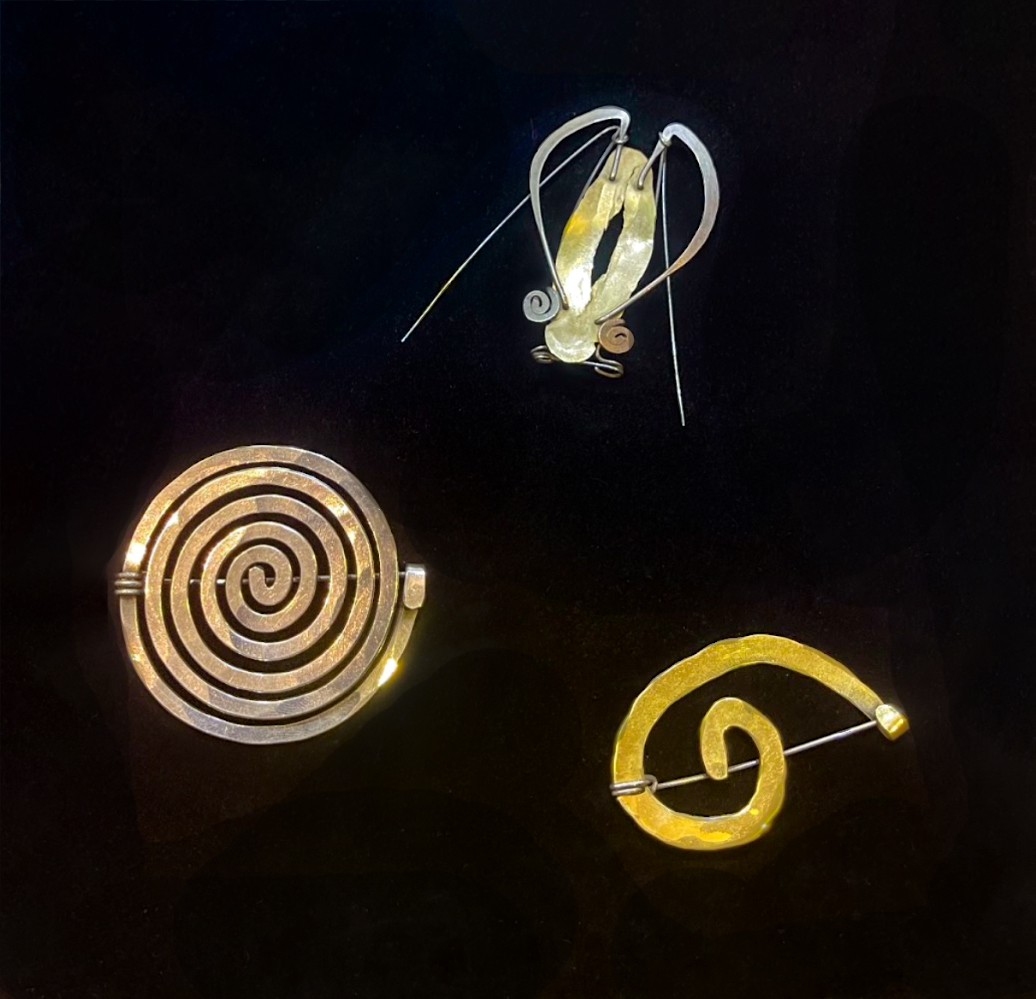
Brooches at the Winter Antiques Show.
Anna McDonaldPointing to a spiral brooch next to the little creature, Didier walks through the handcraft of it: “When you observe the hammer marks on this beaten silver it’s such a sure hand, he’s done this ten thousand times before, he knows exactly how hard he’s going to hit the anvil,” Didier explains. “You can see the mark of the anvil on the reverse, you can also see the tool marks of where he was gripping with his pliers, the teeth of the pliers is there. He doesn’t hide his details.”
There was a long period when this work was undervalued; unfortunately, it was before I was born. The current price tag on that bug pin: a cool $130,000.
















